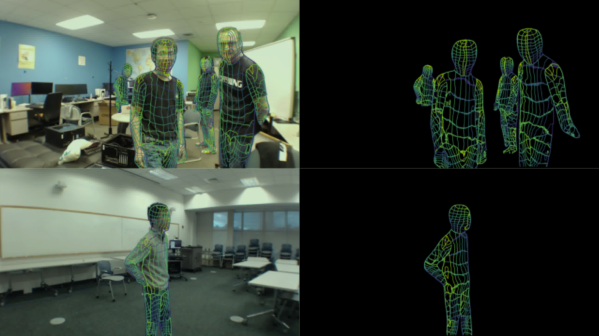In case you thought that cameras, LiDAR, infrared sensors, and the like weren’t enough for Big Brother to track you, researchers from Carnegie Mellon University have found a way to track human movements via WiFi. [PDF via VPNoverview]
The process uses the signals from WiFi routers for an inexpensive way to determine human poses that isn’t hampered by lack of illumination or object occlusion. The system produces UV coordinates of human bodies by analyzing signal strength and phase data to generate a 2D feature map and then feeding that through a modified DensePose-RCNN architecture which corresponds to 3D human poses. The system does have trouble with unusual poses that are not in the training set or if there are more than three subjects in the detection area.
While there are probably applications in Kinect-esque VR Halo games, this will probably go straight into the toolbox of three letter agencies and advertising-fueled tech companies. The authors claim this to use “privacy-preserving algorithms for human sensing,” but only time will tell if they’re correct.
If you’re interested in other creepy surveillance tools, checkout the Heat-Sensing Crotch Monitor or this Dystopian Peep Show.












